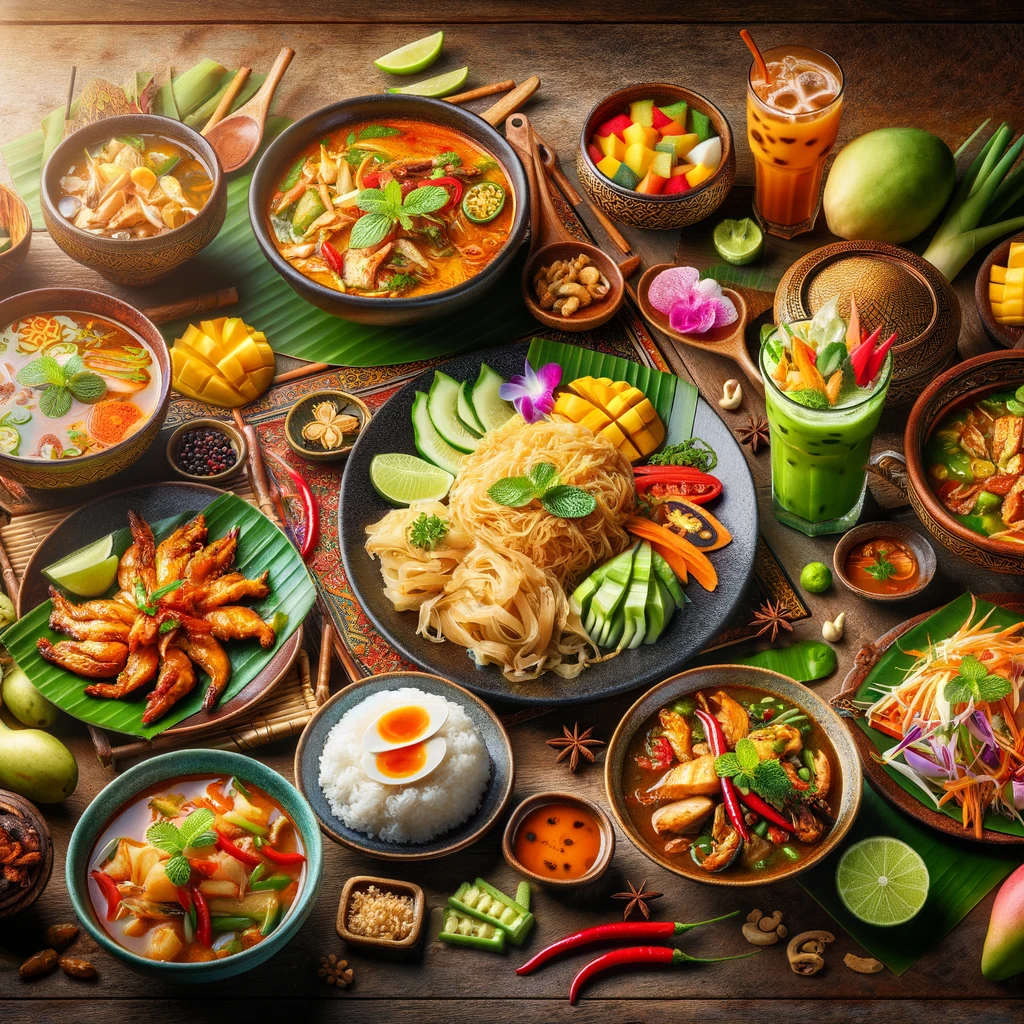Introduction
Thai cuisine, renowned for its aromatic complexity and vibrant flavors, offers an exquisite balance of sweet, sour, salty, bitter, and spicy elements. It’s a gastronomic reflection of Thailand‘s cultural diversity, historical richness, and the bountiful natural resources that define its unique culinary landscape. This article embarks on a flavorful exploration of Thai food, highlighting its key ingredients, hallmark dishes, regional variations, and the culinary traditions that make it a global favorite.
The Core Elements of Thai Cuisine
Thai food is celebrated for its intense flavor profiles, achieved through a variety of fresh herbs, spices, and other quintessential ingredients. Key components include:
- Lemongrass and Kaffir Lime Leaves: Infusing dishes with a citrusy aroma.
- Galangal: A root similar to ginger, offering sharp spiciness and earthy flavors.
- Fish Sauce and Shrimp Paste: Providing the umami depth and saltiness.
- Thai Chilies: Introducing varying degrees of heat.
- Coconut Milk: Adding creaminess and sweet undertones.
These ingredients are skillfully combined to create a harmonious balance, characteristic of Thai culinary philosophy.
Signature Thai Dishes
- Pad Thai: A stir-fried noodle dish, iconic for its perfect blend of nuttiness, sweetness, and tanginess, garnished with peanuts, lime, and fresh herbs.
- Tom Yum Goong: A hot and sour soup, brimming with shrimp, mushrooms, and aromatic herbs, epitomizing the balance of Thai flavors.
- Green Curry: Made with green chilies, coconut milk, and fresh vegetables, offering a spicy and creamy taste experience.
- Som Tum (Papaya Salad): A spicy salad made from shredded unripe papaya, combining sweetness, spiciness, saltiness, and sourness in every bite.
- Massaman Curry: A rich, savory curry that reflects a fusion of Thai and Persian influences, featuring meat simmered with potatoes, coconut milk, and tamarind.
Regional Variations
Thai cuisine varies significantly from region to region, influenced by geography, neighboring countries, and historical migrations:
- Northern Thailand: Known for its mild, salty, and sour dishes, often featuring sticky rice and ingredients like tamarind and turmeric.
- Northeastern (Isan) Cuisine: Characterized by bold flavors, including spicy salads, grilled meats, and an abundance of fresh herbs.
- Central Thailand: Famous for its balance of all the fundamental Thai flavors, with an emphasis on sweetness, reflected in dishes like Pad Thai and Massaman curry.
- Southern Thailand: Distinguished by its use of coconut milk and fresh seafood, with a notable heat from chili peppers in many dishes.
The Art of Thai Meal Composition
A traditional Thai meal is a communal affair, aiming to offer a variety of flavors and textures at the table. It typically includes:
- A curry dish
- A soup
- A fried or grilled dish
- A salad
- Plenty of rice
This arrangement ensures that diners can enjoy a full spectrum of tastes, from mild to fiery, sweet to tangy, in one sitting.
Conclusion
Thai cuisine is a testament to Thailand’s rich cultural tapestry, offering a culinary adventure that’s both diverse and harmonious. Its global appeal lies in its ability to balance a multitude of flavors, creating dishes that are complex, vibrant, and deeply satisfying. Whether you’re enjoying the fiery kick of a red curry or the refreshing zest of a papaya salad, Thai food promises a memorable gastronomic journey that captivates your senses and leaves you craving more.
